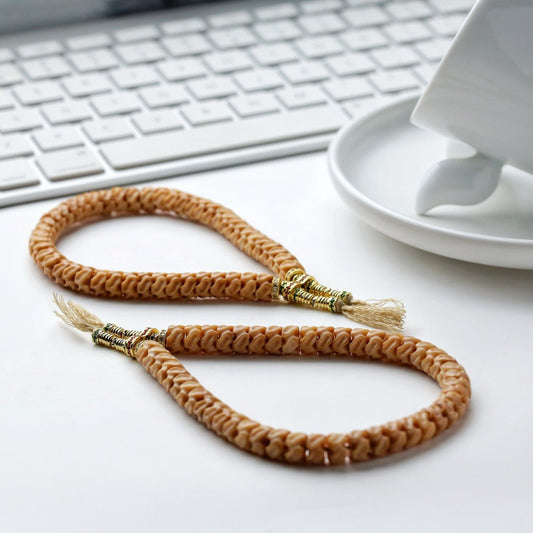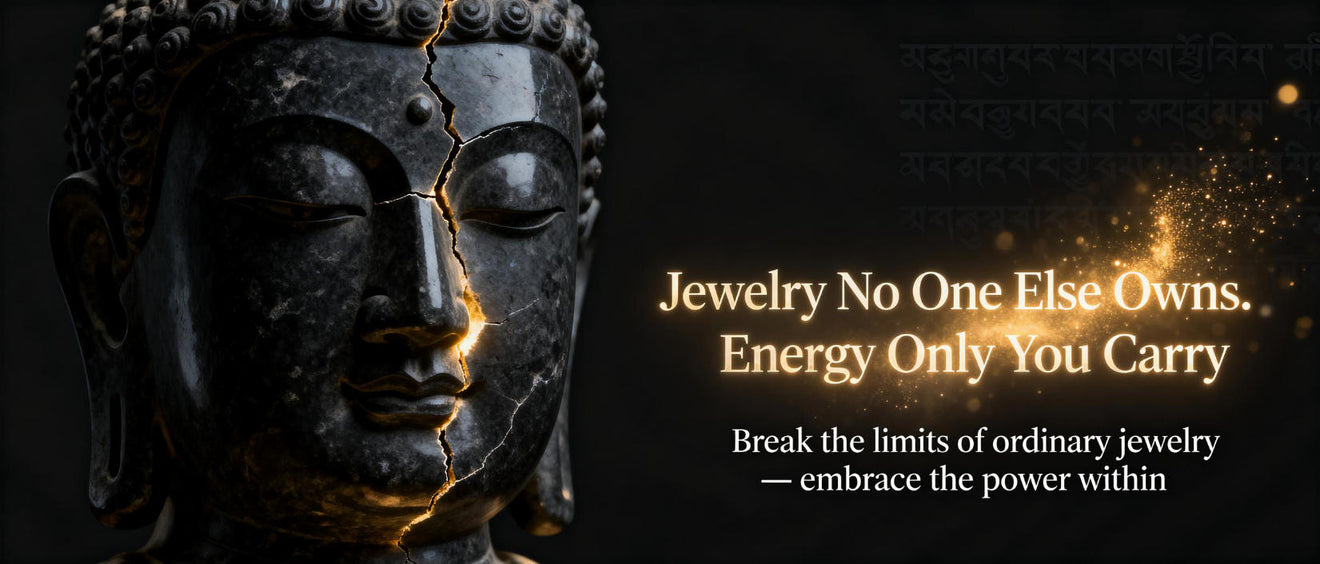
Inside the elaborate weave within Himalayan Buddhist culture are present two celebrated items: the traditional thangka and bodhi prayer bead. Each, uniquely expressed, facilitates linkages to metaphysical clarity. The thangka, a vibrant painting, depicts deities, mandalas, or scenes from Buddhist lore, acting as a visual aid for meditation.
Simultaneously, the bodhi bead, often crafted from semiprecious minerals, hardwood, pods, or osseous tissue, is a tangible reminder of Buddha's awakening under the bodhi tree. Using the beads while meditating strengthens attentiveness.
- Jointly, the thangka and the bodhi bead express the journey towards enlightenment. They offer a tangible link to the timeless doctrines of Tibetan Buddhism.
Chronicles Inscribed in Camel Ossicles
Across the sands of time, age-old treasures whisper tales pertaining to a world long lost. These are not treasured objects of shadowed empires, but plain camel bones carved with figures that safeguard the stories of a bygone phase. All elements preserve the echo originating from a life lived, a journey pursued, and a connection to the hallowed wisdom which encloses us all.
- It
- Tokens
- Offer
Delving into the Depths of Thangka Art: A Symbolic Journey
Tangkas are luminous paintings on canvas, meticulously crafted by Tibetan artists to depict sacred figures and scenes from Buddhist writings. Each detail within a thangka is laden with relevance, forming a complex tapestry of visual narratives that guide the viewer on a inner journey. The tints used in thangkas are not merely aesthetic choices but carry core connotations, symbolizing different aspects of the Buddhist teachings. From the stoic figures to the intricate motifs, thangkas offer a insight into the rich world of Tibetan Buddhism, inviting us to study upon its teachings.
- Time-honored thangka art often depicts key Buddhist figures such as Buddha Shakyamuni, Bodhisattvas like Avalokiteshvara and Manjushri, and enlightened beings from various factions of Tibetan Buddhism.
- Beyond these representations lies a wealth of insight that can be understood by those who examine the symbolic language of thangkas.
Bodhisattva's Path to Enlightenment: Embodied in Beads and Bone
Upon the winding journey to illumination, the Buddha harnessed icons imbued with profound value. Separate bead and material held within them the quintessence of his enlightenment, exhibiting glimpses into the matrix of reality. Alongside their figure, the Buddha delivered profound discoveries that go beyond the realm of commonplace perception.
From those devotional beads, crafted from ancient materials, issued vibrations that sounded with the refined frequencies within. The structure of a being, meticulously transformed into insignia, served as tangible indicators of the impermanence native to all forms.
Thangkas: Windows into Himalayan Spirituality
Thangkas vibrant paintings on cloth serve as influential representations of Himalayan spirituality. These intricate works of art, meticulously created with precise brushstrokes, depict a vast array upon Buddhist deities, mandalas, and scenes from historic scriptures. Each thangka is an instructive medium for meditation and contemplation, offering perception into the nuanced teachings of Buddhism.
- They are often used in ritual ceremonies in the context of
- inducing states of spiritual awakening.
- Thangkas serve as not merely decorative objects but rather pathways into the rich and fascinating world of Himalayan spiritual traditions.
Bodhi Beads as Tools for Mindfulness and Compassion
Each item on a bodhi bead mala whispers tales of ancient wisdom, guiding us on a expedition through the tranquil waters of mindfulness. As we touch these intricately fashioned beads, our fingers trace the contours of individual one, anchoring our alertness in the present moment. The gentle feel of the beads against our palms serves as a tangible reminder to take in air, fostering a sense of composure.
- As each bead that passes between our fingers, we develop compassion, extending it first to ourselves and then outward to the world.
- Sacred teachings teaches us that mindfulness is a skill that requires patience and persistence.
Via the rhythmic repetition of mantra or simply the mindful registering of the beads, we disengage from the relentless chatter of the mind.
The practice applying bodhi beads is a refined invitation to reconnect our connection with ourselves and the world around us.
Focused Energy: Producing Camel Bone Bracelets for Higher Awareness
Purpose functions as an influential power in our lives, shaping our experiences and guiding us towards our sacred journey. When we combine this intention with the time-honored techniques of crafting a camel bone bracelet, we create a potent synergy that can intensify our spiritual growth.Camel bone embodies meaningful essence, representing endurance. Its natural beauty and unassuming elegance serve as a constant reminder of the sacred potential within each of us.Through mindful selection of bones, instill intentions into the creation. With every knot or stitch, we insert our hopes, dreams, and aspirations for spiritual evolution. This act of creation becomes a contemplative exercise, aligning us with our inner wisdom and guiding us on a pilgrimage of understanding.- Consider the colors and patterns within the camel bone to reflect your intentions.
- Visualize your desires as you work, knotting them into the bracelet's structure.
- Keep it close as a symbol of your evolving journey.
The Fascinating Story of Camel Bone in Buddhism
In the rich tapestry inside Buddhist tradition, artifacts often hold profound symbolic meaning. Amidst these varied objects, camel bone stands out as a peculiar and fascinating element. Across history, this material has been applied in the crafting during various Buddhist items, each imbued with specific connotations.
- Appraised as a symbol of resilience and strength due to the camel's ability to overcome in harsh environments, camel bone often represents spiritual fortitude.
- Additionally, the color and texture for camel bone are believed through some to hold auspicious connotations, symbolize purity and serenity.
Therefore, camel bone has become a significant part of Buddhist culture, serving as a tangible connection to the profound teachings through this ancient faith.
Thangka Works: Stories of the Divine
Within the ethereal realm of Tibetan Buddhism, Thangka paintings emerge as sacred portals to enlightenment. These stunning works, meticulously crafted by skilled artists known as thangkapa, depict a myriad composed of vibrant deities, celestial beings, and mythical creatures. Each brushstroke instills profound spiritual significance, narrating ancient tales and philosophical teachings.
- Encompassing a vast reservoir of Buddhist iconography, Thangkas serve as both devotional objects and instructional tools. Dedicated practitioners gaze upon these paintings during rituals and meditations, seeking to achieve spiritual wisdom.
- Ornately decorated with intricate details incorporating a spectrum of vibrant hues, Thangkas are considered windows into the divine. Every one painting acts as a symbolic representation of the Spiritual Leader's teachings and the path to liberation.
Using their powerful imagery and symbolism, Thangka paintings offer a glimpse into the rich theological traditions of Tibet. They are a testament to the enduring mastery of Tibetan art and its profound ability to invigorate.
Embracing the Duality: Thangkas and the Cycle of Life and Death
Thangkas, lively crafted Tibetan hangings, communicate a serious study of existence’s temporality. Each intricate representation depicts deities and beings engaged in the persistent journey of life and death, a mosaic of birth, growth, impermanence, and reawakening. The artists skillfully weave these concepts within the thangka's domain, highlighting the relation of all things. Through vivid illustrations, they invite us to ponder on our own life. The cycle recurs, a dance of coming and going, highlighting the preciousness of each moment. By embracing this duality, thangkas teach us to embrace the beauty in both life's joys and sorrows.Loops of Belief: The Significance of Bracelets in Buddhist Practice
In the intricate tapestry of Buddhist practice, seemingly minimalist objects often hold profound meaning. Among these are bracelets, which serve as tangible symbols of devotion and commitment to the journey of Buddha. Worn on the wrist, a bracelet serves as a constant reminder of one's aspirations and ambitions. It can suggest the impermanence of life, urging practitioners to remain stable in the present moment. Some bracelets may harbor sacred glyphs, such as mantras Exclusive bracelet or the names of Buddhas, which are perceived to bring forth positive energy and shield. Others are commonly made from resources with spiritual significance, like sandalwood or lotus seeds, enriching the bracelet's impact. Ultimately, the significance of a Buddhist bracelet exists far beyond its physical form. It becomes a powerful tool for thought, a prompt to live in harmony with the teachings of Buddha, and a manifestation of one's unwavering faith.